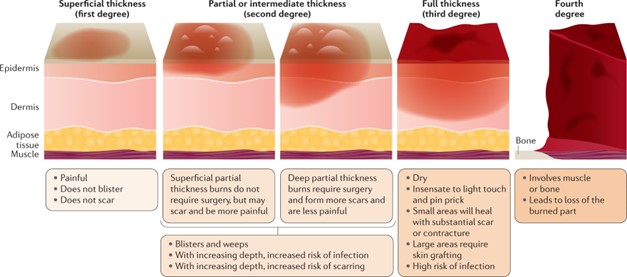The nurse is assigned to care for four surgical clients. After receiving report, which client should the nurse see first?
An adult who is in Buck's traction, and scheduled for hip arthroplasty within the next 12 hours.
An older client who is receiving packed red blood cells on the third day postoperatively for colon resection.
An older client with continuous bladder irrigation who is 2 days postoperatively for bladder surgery.
An adult one day postoperative laparoscopic cholecystectomy requesting pain medication.
The Correct Answer is B
A) Incorrect- Hip arthroplasty is a scheduled procedure, and there is no immediate indication of a critical condition that requires urgent attention.
B) Correct- Postoperative hemorrhage is a serious complication, and an older client receiving packed red blood cells may be experiencing active bleeding. This situation requires immediate assessment and intervention.
C) Incorrect- While continuous bladder irrigation requires monitoring, it is not as urgent as a potential postoperative hemorrhage.
D) Incorrect- Pain management is important, but it is not as urgent as assessing a client who may be experiencing active bleeding.
Nursing Test Bank
Naxlex Comprehensive Predictor Exams
Related Questions
Correct Answer is ["B","D","E"]
Explanation
These findings suggest potential complications and compromise to the client's circulation and nerve function, which require immediate attention.
Changes in the quality of peripheral pulses indicate alterations in blood flow and may suggest vascular compromise or decreased perfusion to the affected areas. This finding requires immediate intervention to prevent further damage and ensure adequate blood supply to the extremities.
Loss of sensation to the left lower extremity can be indicative of nerve injury or impaired peripheral nerve function. It is important to assess for nerve damage and address it promptly to prevent complications and maximize the client's recovery.
Complaints of increased pain and pressure are concerning because they may indicate the development of compartment syndrome, a serious complication in which pressure within the muscles and tissues builds up to dangerous levels. Prompt intervention is necessary to relieve the pressure and prevent tissue damage.
While sloughing tissue around wound edges and weeping serosanguineous fluid from wounds are important assessment findings in the context of burn care, they do not require immediate intervention compared to the findings mentioned above. These findings should still be addressed and managed appropriately, but they are not considered immediate emergencies.

Correct Answer is A,B,C,D,E
Explanation
A) This is because the client is experiencing an allergic reaction to piperacillin, which can be life-threatening. The nurse should stop the infusion immediately to prevent further exposure to the drug and assess vital signs to monitor for signs of anaphylaxis, such as hypotension, tachycardia, wheezes, or stridor.
B) Assessing vital signs is a priority to determine the severity of the reaction and the client's overall condition.
C) The nurse should contact the healthcare provider to report the situation and obtain orders for treatment, such as antihistamines, corticosteroids, or epinephrine.
D) The nurse should initiate an adverse event report to document the incident and follow the facility's protocol for reporting medication errors.
E) The nurse should also document the reaction to the drug in the client's chart and notify the pharmacy to avoid future administration of piperacillin or related antibiotics.

Whether you are a student looking to ace your exams or a practicing nurse seeking to enhance your expertise , our nursing education contents will empower you with the confidence and competence to make a difference in the lives of patients and become a respected leader in the healthcare field.
Visit Naxlex, invest in your future and unlock endless possibilities with our unparalleled nursing education contents today
Report Wrong Answer on the Current Question
Do you disagree with the answer? If yes, what is your expected answer? Explain.
Kindly be descriptive with the issue you are facing.
